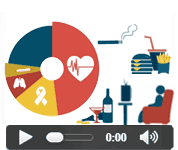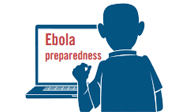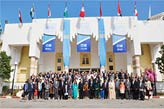1. Scope and purpose
Maternal and child mortality remain one of the main public health concerns in the Eastern Mediterranean Region. The maternal mortality ratio decreased by 50% between 1990 and 2013, and under-five mortality rate decreased by 45% between 1990 and 2012 in the Region ([1],[2]). Despite these achievements, the levels of reduction fall short of meeting the Millennium Development Goal (MDG) 4 target of a 66% reduction in under-five mortality and MDG 5 target of 75% reduction in maternal mortality ratio by 2015. The level of maternal mortality in the Eastern Mediterranean Region comes after those of the African and South East Asia regions. Meanwhile, the level of child mortality comes after that of the African region.
To scale up efforts to improve maternal and child health in the Region, the initiative “Saving the lives of mothers and children” was launched by WHO, the United Nations Population Fund (UNFPA) and UNICEF jointly with Member States in a high-level meeting held in Dubai, the United Arab Emirates, in January 2013. The meeting concluded with the “Dubai Declaration”. The Declaration called on Member States to express their commitment to develop and implement maternal and child health acceleration plans; take measurable steps to strengthen their health systems-related elements; establish sustainable financing mechanisms, mobilize domestic and international resources through traditional and innovative approaches; and improve coordination and accountability between all partners. The Declaration was endorsed by the 60th session of the WHO Regional Committee for the Eastern Mediterranean in October 2013. Resolution EM/RC60/R.6 called on Member States to fulfil the commitment expressed in the declaration to prioritize and promote maternal and child health; and ensure regional solidarity to support the implementation of maternal and child health acceleration plans. It also urged countries with a high burden of maternal and child mortality (Afghanistan, Djibouti, Egypt, Iraq, Morocco, Pakistan, Somalia, Sudan and Yemen) to strengthen multisectoral partnership in order to implement their national acceleration plans; allocate – to the extent possible –- the necessary national human and financial resources; and work on mobilizing additional resources from donors, partners and development agencies. It requested the Regional Director to provide technical support to Member States to implement their national acceleration plans; support Member States in their efforts to mobilize additional resources for this purpose; call on donors and development agencies to assume their role in contributing to and supporting this initiative; and report to the Regional Committee on progress in implementation of the national acceleration plans annually until 2015.
The main challenge for Member States is the need to ensure sustained commitment to maternal and child health. This will assist in addressing funding gaps, which may result in delays or deficiency in the implementation of the acceleration plans. The shortage of adequate human resources to deliver quality care and lifesaving medicines and commodities, especially in remote areas, together with the quality and fragmentation of services, also need to be addressed.
Hence, the objective of the side meeting on “saving the lives of mothers and children” will be to (i) highlight achievements made in the implementation of the Regional initiative on saving the lives of mothers and children, (ii) emphasize the need to ensure sustained commitment to maternal and child health in Member States, (iii) explore mean and ways to maintain close partnership with concerned UN agencies and international organizations, and (iv) explore resource mobilization opportunities in Member States, including high-level events.
2. Challenges in the Region
With almost 899 000 children under-5 years of age and 29 000 women of childbearing age still dying each year, the main challenges to progress in the area of maternal and child health were identified as inequities in availability and accessibility of the health services, lack of national integrated plans and of coordinated action and support by partners. Weaknesses in some health systems are also a contributing factor, in particular shortage of human resources and access to life-saving medicines and commodities. Insufficient financial resources to implement cost-effective interventions to save lives and lack of sustained commitment to maternal and child health are key issues in some countries, while political instability and insecurity, particularly in countries facing emergencies, also have an important role in maternal and child ill-health and mortality.
With progress towards MDGs 4 and 5 in jeopardy for nearly half the countries in the Region, WHO committed to scaling up support for maternal and child health with special emphasis on nine priority countries with a high burden of morbidity and mortality among mothers and children. This includes: promotion of primary health care for maternal and child health to ensure universal coverage; reviewing and strengthening national capacity-building to improve quality of care; documenting and sharing of successful interventions and best practices in the Region; and strengthening of mechanisms for collaboration and coordination, both internally and externally with UNFPA and UNICEF and other key stakeholders.
3. Expected outcome of the meeting
Member States are sensitized to the need for maintaining close commitment to the regional initiative on saving the lives of mothers and children that was launched in partnership with UNFPA and UNICEF, and other stakeholders at Dubai high-level meeting and reflected in Dubai declaration.
4. Conclusion
The main challenge for Member States is the need to ensure sustained commitment to maternal and child health. This will enable funding gaps, which may result in delays or deficiency in the implementation of the acceleration plans, to be addressed. The shortage of adequate human resources to deliver quality care, including necessary supportive policies, and lifesaving medicines and commodities, especially in remote areas, together with the quality and fragmentation of services, also need to be addressed.
In the coming 15 months Member States need to maintain high level advocacy for the maternal and child health acceleration plans in order to sustain commitment at different levels of the government and among partners and mobilize resources to bridge funding gaps. The regular flow of funds committed to the acceleration plans to the different implementation levels needs to be ensured, as does regular availability of skilled human resources and life-saving medicines and commodities. Quality of care and the health information system up to the health district level need to be improved. The quality of implementation of acceleration plans needs to be monitored and appropriate operational research conducted.
WHO will support Member States to maintain a high level of commitment; invest in close partnership and collaboration with UNFPA and UNICEF and key stakeholders; and support resource mobilization effort to address gaps in funding of the acceleration plans. WHO will also support the strengthening of country capacity to implement the plans and will follow up on implementation, jointly with key partners to ensure smooth implementation and optimal outcome. Coordination mechanisms with partners will be further strengthened to monitor progress and address bottlenecks.
[1] Levels & Trends in Child Mortality: Report 2013 Estimates Developed by the UN Inter-agency Group for Child Mortality Estimation. The United Nations Children’s Fund, 2013.
[2] Trends in Maternal Mortality: 1990 to 2013. Estimates by WHO, UNICEF, UNFPA, The World Bank and the United Nations Population Division. World Health Organization 2014.









